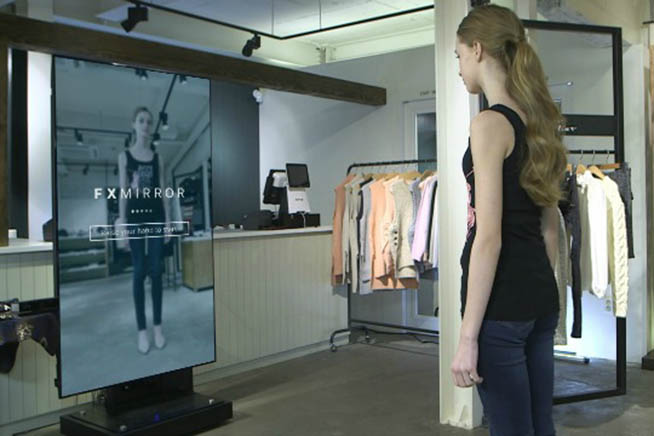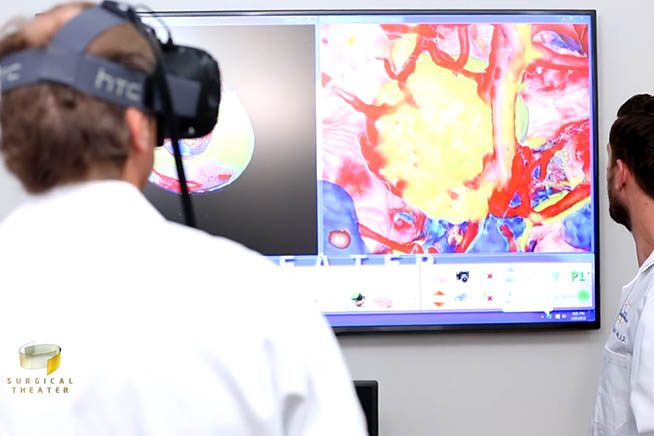Those who try it fall in love with it. Virtual reality is able to give emotions, to live fantastic adventures, to offer an escape from the boredom that sometimes peeps out in the lives of many. It is a mature technology and, all things considered, also affordable for all budgets.
For a perfect immersion in virtual reality you need three ingredients: a visor integrated with a display that surrounds the view and a surround sound system, a computer (a console or a smartphone) and a controller, or other input device, to interact with this new dimension. The brain knows it’s a fiction, but the senses don’t listen to it: they believe, if only for a moment, everything they see, hear and touch. An excellent antidote to escape the daily monotony and carve out a fantastic place at the edge of the world. The only risk of VR (virtual reality)? It can be addictive!
What is virtual reality
Virtual reality is born from the combination of hardware and software devices that “work together” to create a virtual space within which the user can move freely. Access to this digital world is made possible by VR visors and accessories (not only joypads, but also gloves, shoes and more) developed specifically to interact and “live” within virtual reality. In this way, a simulated and three-dimensional world is created that appears as real to the eyes (but not only) of users. And just as it happens in reality, the virtual/real environment within which you are immersed, can be explored in every single inch and in every direction. All the user has to do is turn his head to see what is happening at his sides or lift it upwards to see the rain falling on his head. Il visore, e i software che utilizza, terranno traccia dei movimenti della testa (vedremo tra poco come) così da adattare prospettiva e visuale alla nostra posizione e offrire immagini realistiche.
 Fonte foto: Pexels
Fonte foto: Pexels
Realtà virtuale, mondi digitali
C’è realtà virtuale e realtà virtuale
Sul primo gradino ci sono i modelli Google Cardboard: caschetti di cartone o, comunque, super economici, che permettono di piazzare davanti agli occhi uno smartphone che visualizza applicazioni in grado di offrire, secondo il colosso di Mountain View, delle “esperienze immersive”. Va bene, ma è come guidare una bici invece di una moto. La “vera” realtà virtuale è qualcosa di completamente diverso. You need a kit consisting of a visor – like an Oculus Rift or PlayStation VR – connected to a computer, or even better a console, with a set of devices to control head and eye movements, voice and audio, as well as a controller or, at the very least, a trackpad. If you’re looking for the ultimate, there are even special gloves for virtual reality.
(video taken from YouTube)
All-round immersive 3D visual
The goal of VR viewers is to create a kind of new dimension, something quite different from the 3D offered by TVs or less special goggles. It is true that it is, also in this case, a virtual environment in three dimensions but that it has no limits or “blind spots” because the screen of the visor covers every possible movement of the eyes and the head. The video, or the game, is sent from the computer to the viewer via an HDMI (high definition) cable. Alcuni modelli si presentano con uno schermo LED per occhio con l’aggiunta di lenti, mentre altri permettono persino di regolare la distanza tra gli schermi e gli occhi per una visione ancora migliore. In altri prodotti, invece, come il Daydream di Google e il Samsung Gear VR, è lo smartphone a fungere da schermo, ma inserito in un apposito alloggiamento.
 Fonte foto: Flickr
Fonte foto: Flickr
Interno del Samsung Galaxy VR
Ancora più reale della realtà
Alcuni visori usano uno stratagemma per offrire un’immersione nella realtà virtuale ancora più spettacolare: allargare il campo visivo, per esempio ingrandendo la dimensione delle immagini. Un display a 360 gradi risulterebbe troppo costoso, oltre che inutile, quindi la maggior parte dei prodotti di fascia alta offre un campo visivo dai 100 ai 110 gradi che sono più che sufficienti per raggiungere l’obiettivo. In addition, to make the images even more realistic, a “frame rate” – i.e., a frame rate – in the order of about 60 fps is needed to avoid jerky or eye-obnoxious viewing. The current generation of visors, such as the Oculus Rift or PlayStation VR, offer a frequency of 90 fps and 120 fps respectively.
(video taken from YouTube)
Do not move your head
Other technologies also come into play when it comes to virtual reality, such as head tracking, i.e. the system that monitors the movement of the head: the image, in practice, moves by following the exact movements of the head: up, down, sideways, forward and backward. It is what is called in jargon “six degrees of freedom”. Head tracking requires instruments such as a gyroscope, an accelerometer and a magnetometer to work inside the viewer. Il Sony utilizza, per esempio, nove luci led posizionate sul suo visore che, comunicando con una videocamera esterna, offrono un tracking di 360 gradi. Oculus propone un sistema simile, ma non paragonabile alla PlayStation VR. Si parla, inoltre, di latenze (tempi di reazione) davvero minime dell’ordine di 50 millisecondi, se non addirittura 30 ms per la Oculus. Non può ovviamente mancare in un visore che si rispetti un sistema audio professionale che offra, soprattutto nei giochi, la sensazione di suoni che provengono da tutte le direzioni, o in avvicinamento o allontanamento.
 Fonte foto: Flickr
Fonte foto: Flickr
Oculus Rift in testa
Tutto (o quasi) sotto controllo
L’head tracking, infine, va in coppia con l’eye tracking. The technology, in this case, to monitor the movement of the eyes uses an infrared sensor that offers the additional advantage of making the depth of field even more realistic. In standard viewers, however, the images are all in focus, which is not the way you see reality. Not surprisingly, high-end models are instead able to play with the “focus”, so to speak, blurring, for example, the images in the distance while leaving sharp ones in the foreground.
The last frontier of virtual reality, finally, is motion tracking: the motion sensor to always know where the user is in space as Microsoft Kinect has been doing for years. Here, however, we enter the field of optional accessories. Among the few models that offer this technology, there are the usual Oculus and Sony. But there are also other devices that many manufacturers are combining with virtual reality viewers such as controllers or joysticks, voice commands, smart gloves and even treadmills.
The application fields of virtual reality
Given these characteristics, virtual reality has the potential to revolutionize – in the true sense of the word – several areas of entertainment, industrial production and commerce. The launch of the PlayStation VR, for example, provides a glimpse of how VR viewers can “impact” the video game industry by providing a completely different gaming experience than in the past. Similarly, the tourism sector could also change so profoundly that, within a few years, it could be unrecognizable: it will be enough to wear a VR visor, in fact, to immediately move to a tourist location and visit it well before setting foot there. In questo modo si potrà scegliere la meta delle vacanze estive o invernali con piena consapevolezza ed evitando spiacevoli sorprese.
 Fonte foto: web
Fonte foto: web
Camerino virtuale per provare abiti senza indossarli
La realtà virtuale, inoltre, consentirà di “provare” gli abiti (e accessori di ogni tipo) prima di acquistarli e senza la necessità di passare dal camerino: si indossa il visore e si scorre tutto il magazzino del negozio, decidendo di volta in volta cosa provare e cosa acquistare. Le piattaforme hardware e software sviluppate da Nvidia (produttore di chip, particolarmente noto per le sue schede grafiche), invece, vogliono dare un impulso all’utilizzo della realtà virtuale negli ambienti di lavoro. Grazie a software di rendering 3D, ad esempio, si potranno “costruire” ed esplorare palazzi e abitazioni virtuali, così da verificarne eventuali deficit progettuali e dare modo ai committenti di “abitarle” (anche se per pochi minuti) prima della posa della prima pietra; medici e chirurghi, invece, potranno utilizzare visori VR per “ripassare” i passaggi più difficoltosi e insidiosi degli interventi chirurgici.
 Fonte foto: Nvidia
Fonte foto: Nvidia
Sala chirurgica virtuale per provare gli interventi più pericolosi
Realtà virtuale vs. realtà aumentata
Bisogna però fare attenzione a non confondersi: la realtà virtuale ha ben poco a che fare con la realtà aumentata. Forse tratti in inganno dai visori, per alcuni versi simili, molti credono che le due tecnologie siano, di fatto, una sola e i termini possano essere utilizzati a mo’ di sinonimi. La realtà (è il caso di dirlo) è un’altra. While technologies and software related to virtual reality allow to “immerse” oneself in a completely digital world, unrelated to the external and physical one, augmented reality “superimposes” itself on the physical reality, providing users with additional information about the environment that surrounds them. Visors for augmented reality (such as Google Glass, now retired, or Microsoft HoloLens) exploit their sensors and connectivity to the network to provide, for example, directions to walk or bike to the square or train station you were looking for; they allow you to view SMS and e-mail messages (or texts of any kind) without having to look away from what you are already doing; they allow you to automate many actions otherwise performed by hand. Exploiting holograms and other graphic animations, viewers like Microsoft HoloLens are able to “enrich” reality (augment it, in fact) with information otherwise difficult to find.
Some videos in this section have been taken from the Internet, then evaluated in the public domain. If the subjects present in these videos or the authors had something against the publication, just make a request for removal by sending an email to: [email protected]. We will provide to the cancellation of the video in the shortest time possible.